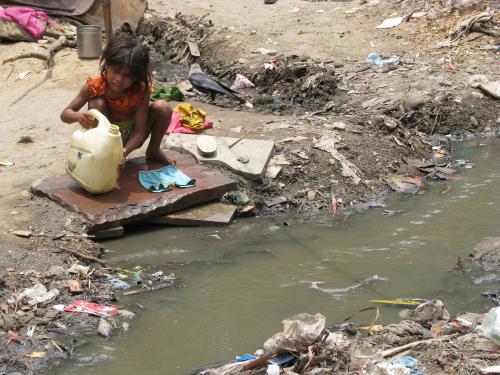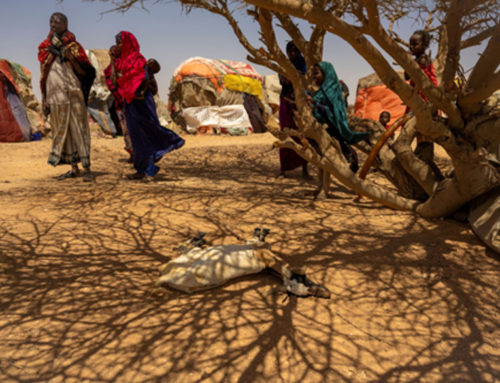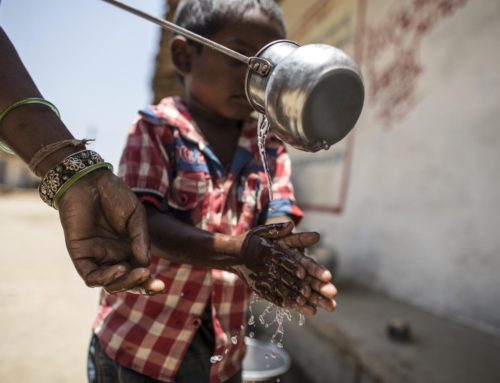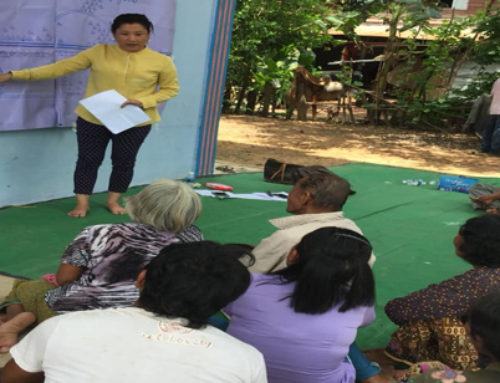Children and youth are often the most severely affected by inadequate sanitation and open defecation. By virtue of their developing immune systems, they are affected by a host of illnesses and conditions ranging from physical and mental stunting to cholera and malnutrition. When considered at the scale of nations, this means millions of children around the world suffer from the various physiological complications that arise from open defecation and inadequate access to sanitation. Considered over time, this can also have a significant effect on the workforce, and therefore the productivity of a country.
A wealth of reports and studies have described open defecation as one of the biggest public health concerns in developing nations. They elaborate upon the various health problems that arise from children’s chronic exposure to open defecation while emerging evidence has linked open defecation to a number of poor health outcomes the most prevalent of which is child stunting, particularly in South Asia. It is estimated that 159 million children worldwide under the age of five are stunted.1 Inadequate access to latrines also has its consequences. In 2015, a joint report by UNICEF, USAID and the WHO compiled a list of case studies and scientific studies that demonstrated a link between poor sanitation and chronic malnutrition in children through the spread of diarrhoea and other intestinal parasites.
Child Stunting
Child stunting and wasting is observed to be one of the most widespread consequences of open defecation and poor sanitation around the world. A study published by Dean Spears and Arabinda Ghosh studies 112 districts in India demonstrated that child stunting statistics were significantly higher in areas where the practice of open defecation was more frequent.2 In these districts, it was noted that “Over half of the children are stunted, and almost a third of children are severely stunted.” In another paper, Spears has stated that living with or near neighbours that continue to practice open defecation the negative health effects of open defecation are significantly more pronounced owing to densely populated regions.3
This is especially common in many areas in India. He mentions “the difference in average height between Indian and African children can be explained entirely by differing concentrations of open defecation. There are far more people defecating outside in India more closely to one another’s children and homes than there are in Africa or anywhere else in the world.”4
Diarrhoea and Child Mortality
Diarrhoea accounts for 9% (800,000) of deaths of children under five years of age worldwide due to constant exposure and ingestion of germs from faecal matter.5 In Ethiopia for instance, diarrhoea is the leading cause of mortality for children under five, causing 23% of deaths. A study conducted in Ethiopia from the Journal of Environmental and Public Health demonstrated that “the overall prevalence of under-five diarrhoea among the individuals living in the ODF kebeles [neighbourhoods] was lower as compared with the OD kebeles.” 6 A similar result was observed in Kenya, where the only two sub-districts in the country that were ODF had significantly lower prevalence of diarrhoea than other areas.7
Similarly, it was reported in 2015 that 100,000 children in India died due to diarrhoea, with a combined 499,000 from India and Nigeria alone.8 While the study cited above also states that “71 out of every 1,000 babies born alive die before they are one year old”9, another report from the Lancet journal, however, has noted some encouraging news. While overall diarrhoea deaths in children under the age of five dropped by 34.3% globally between 2005 and 2015, in India the rate of reduction was at 43.2%. The number of under-five deaths in India declined from 3.33 million in 1990 to 1.34 million in 2013.10
Malnutrition
The WHO estimates that 50 percent of malnutrition is associated with repeated diarrhoea or intestinal worm infections from unsafe water or poor sanitation.11 This is because children with diarrhoea eat significantly less food and are able to absorb fewer nutrients from their food, which perpetuates the cycle of catching bacteria-related illnesses. Diarrhoea is also caused by lack of clean water for handwashing. It is also exacerbated by the lack of functional toilets which adequately dispose of faecal matter, as faeces on the ground contribute to contaminated drinking water and water resources.
This means that millions of children are unable to attain a healthy body no matter how well they are fed, a classic sign of malnutrition. Jean Humphrey, a professor of human nutrition at Johns Hopkins Bloomberg School of Public Health mentions that the “children’s bodies divert energy and nutrients away from growth and brain development to prioritize infection-fighting survival.”12 This eventually leads to stunting and inadequate childhood development. This phenomenon is, again, much more prevalent in India due to its dense population concentration in many areas of the country.
Gender-based violence
There are also strong and disproportionate gender-based impacts of open defecation and the lack of adequate sanitation hardware. For girls and young women, the lack of access to private latrines and toilets renders them vulnerable to sexual violence, which frustrates efforts for them to lead a healthy and productive life. This is a major public health concern as well as one of human rights.
This means that many girls and young women live in constant fear, as has been noted by the Sanitation and Hygiene Applied Research for Hygiene (SHARE) organization.13 As there are no private lavatory facilities for women, they are often forced to relieve themselves in public places during the early hours of the morning or late at night, when the likelihood of sexual assault or violence is higher. In India for example, the SHARE report notes various instances of rape as boys were observed to wander around women’s toilets at night. The report also mentions “boys shamelessly staring at them, making threats, throwing bricks and stabbing them.”
Moreover, the report also outlines that many women fear the water and public toilets that they can use to clean themselves is far from clean, which contributes to the fear of infection or sickness, further exacerbating the health problems that result from open defecation.
Featured image source: https://www.yashodafoundation.org/sanitation-for-children-in-rural-india/
1 “Without Toilets, Childhood Is Even Riskier Due to Malnutrition.” UNICEF, 19 Nov. 2015, www.unicef.org/media/media_86283.html.
2,9 Spears, Dean, and Arabinda Ghosh. “Open Defecation and Childhood Stunting in India: An Ecological Analysis of New Data from 112 Districts.” PLoS ONE, 2013.
3 “Open Defecation Linked to Stunting in Indian Children.” Down To Earth, www.downtoearth.org.in/news/open-defecation-linked-to-stunting-in-indian-children-42252.
4,12 Harris, Gardiner. “Poor Sanitation in India May Afflict Well-Fed Children With Malnutrition.” The New York Times, 13 July 2014, www.nytimes.com/2014/07/15/world/asia/poor-sanitation-in-india-may-afflict-well-fed-children-with-malnutrition.html?_r=0.
5,6 Ayalew, Abireham Misganaw, et al. “Assessment of Diarrhea and Its Associated Factors in Under-Five Children among Open Defecation and Open Defecation-Free Rural Settings of Dangla District, Northwest Ethiopia.” Journal of Environmental and Public Health, vol. 2018, 2018, pp. 1–8., doi:10.1155/2018/4271915.
7 Njuguna, John. “Effect of Eliminating Open Defecation on Diarrhoeal Morbidity: an Ecological Study of Nyando and Nambale Sub-Counties, Kenya.” BMC Public Health, vol. 16, no. 1, 2016, doi:10.1186/s12889-016-3421-2.
8,10 Livemint. “India Continues to Record High Child Mortality Rate Due to Diarrhoea: Study.” Https://Www.livemint.com, Livemint, 2 June 2017, www.livemint.com/Science/oWS5VjPoILlK0HG3TK3QSM/India-continues-to-record-high-child-mortality-rate-due-to-d.html.
11 “Water, Sanitation, Hygiene, and Malnutrition in India.” Population Reference Bureau, www.prb.org/india-sanitation-malnutrition/.
13 Lennon, Shirley. Fear and Anger: Perceptions of Risks Related to Sexual Violence against Women Linked to Water and Sanitation in Delhi, India. Sanitation and Hygiene Applied Research for Hygiene, Nov. 2011, www.susana.org/_resources/documents/default/2-1758-vawindia.pdf.







Leave A Comment